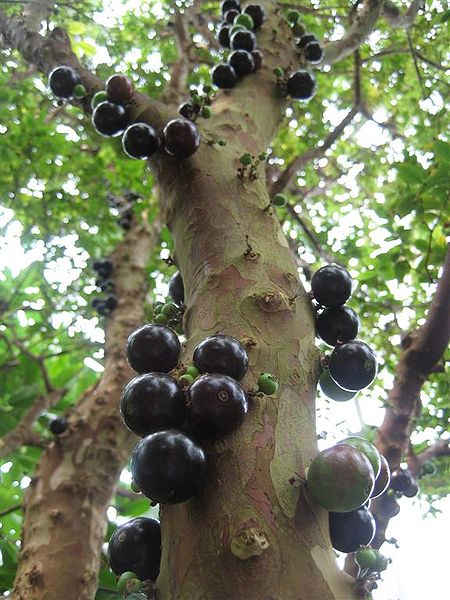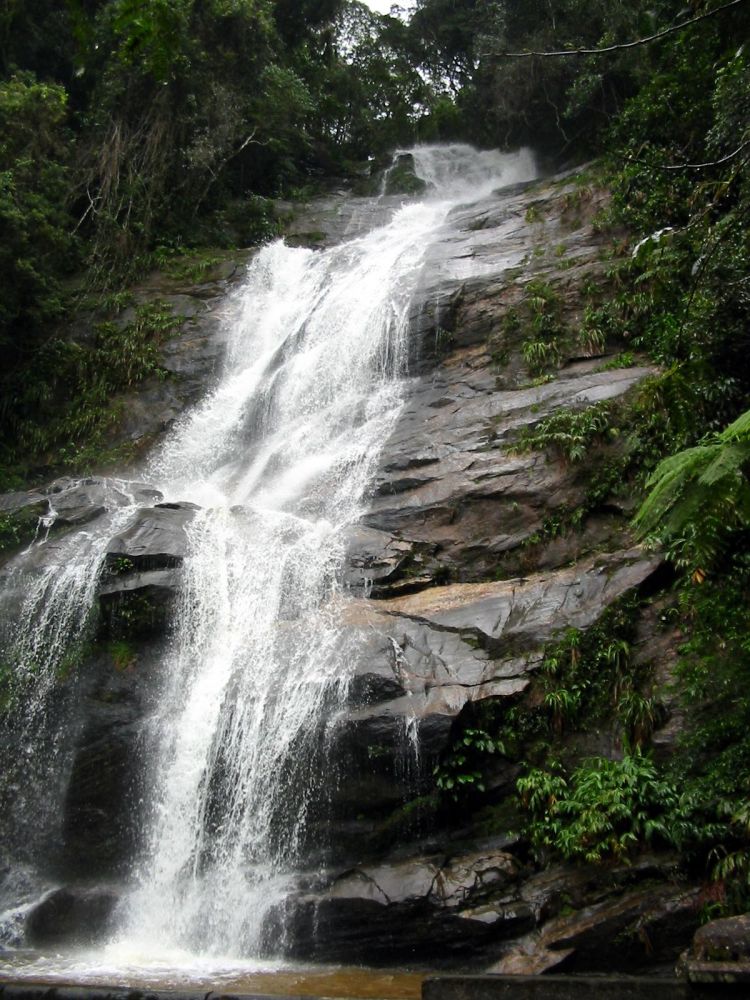Tijuca Forest in Rio de Janeiro is said to be the world’s largest “urban forest” (as in “forest within a city”), covering roughly 32 km2 of hand planted Atlantic Rainforest. Today, 1.5 million people visit the forest annually, to see a place that is remarkable due to its rich history and its symbiosis with the City of Rio.

This satellite view of Rio de Janeiro shows the location of Tijuca Forest near the City’s dense urban core. Forest covers 7% of the City.
The forest is a man-made reclamation of land in Rio that was cleared and developed as part of Portuguese colonization. Up until the mid-17th century, the Tijuca Forest was pristine, until the intensive cultivation of sugar and coffee destroyed the original forest. The deforestation caused the first ecological troubles for the people living in Rio, including water shortages, as the forest was Rio’s main water supply.

In 1861, the Brazilian king Dom Pedro II clued in to what was going on and noticed the dwindling supply of drinking water. He soon realized that the deforestation caused by farming was leading to increased erosion and declining levels of rainfall. So the King got Major Manuel Gomes Archer to lead a replanting project in an effort to protect Rio’s water supply. And after 13 years and the transplantation of 100,000 indigenous trees, birds, insects, small animals, and even monkeys and wildcats came back to the forest. This reforestation project was seen as a pioneering initiative in Latin America at the time, and I think still is today.

The Jabuticaba tree (also known as the Brazilian Grape Tree) – one of the interesting tree species found in the forest.
There was a second reforestation project from 1874-1888 which turned the Tijuca Forest into a park. However, it took a wealthy entrepreneur in 1943 to really renew the park and give it new life, as it had been forgotten in the years past. Raymundo Ottoni de Castro Maya had the mission to coordinate the renovation of Tijuca Forest. During the renovation, works of art were installed, along with public baths and restaurants, and in 1961, the Tijuca Forest was declared a National Park.

If you were to visit Tijuca Forest today, you would see hundreds of species of plants and wildlife, many of which are threatened by extinction (25 endangered animal species and 433 endangered plant species to be exact). The vegetation in the forest is so thick that scientists have said that ambient temperatures close to the forest have dropped by up to nine degrees Celsius! Much of the rain and fresh water in Rio is also attributed to the forest, which even has 30 different waterfalls within it.

Tijuca Forest is an inspiring example of what can be done with a forest within city limits, and also a successful example of how we can mitigate the negative impact of deforestation. It highlights the important role the urban forest plays in our local environment such as air temperature control and prevention of erosion. The residents of Rio cherish their urban national park, and if you just type “Tijuca Forest” into your web browser, you will be overwhelmed with numerous tour options from various companies all keen to take you exploring through the urban jungle.
What do you think about the story of Tijuca Forest? Do you think this is a shining example in the urban forest world?
Jaclyn Corneil is LEAF’s Stewardship and Education Assistant.
